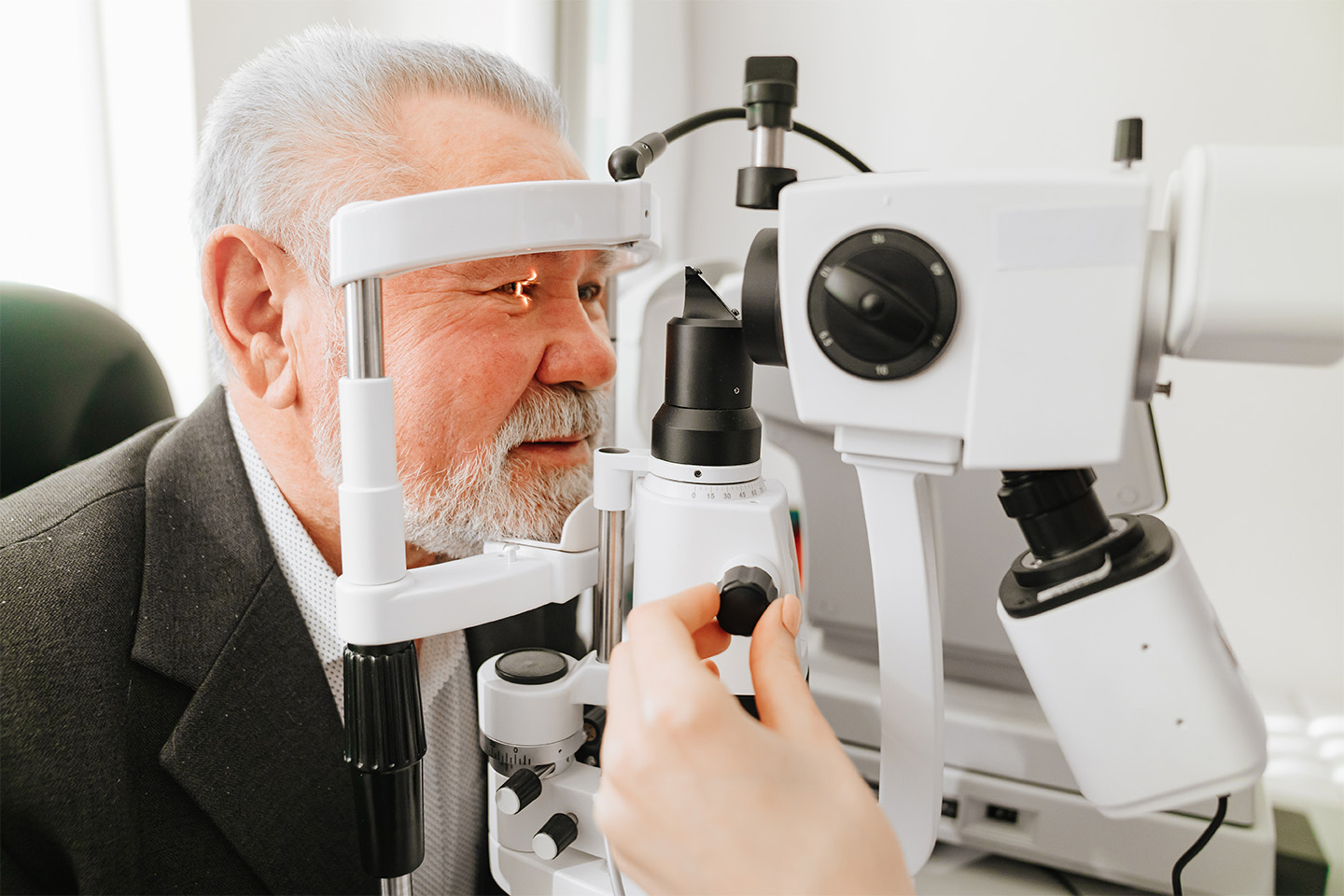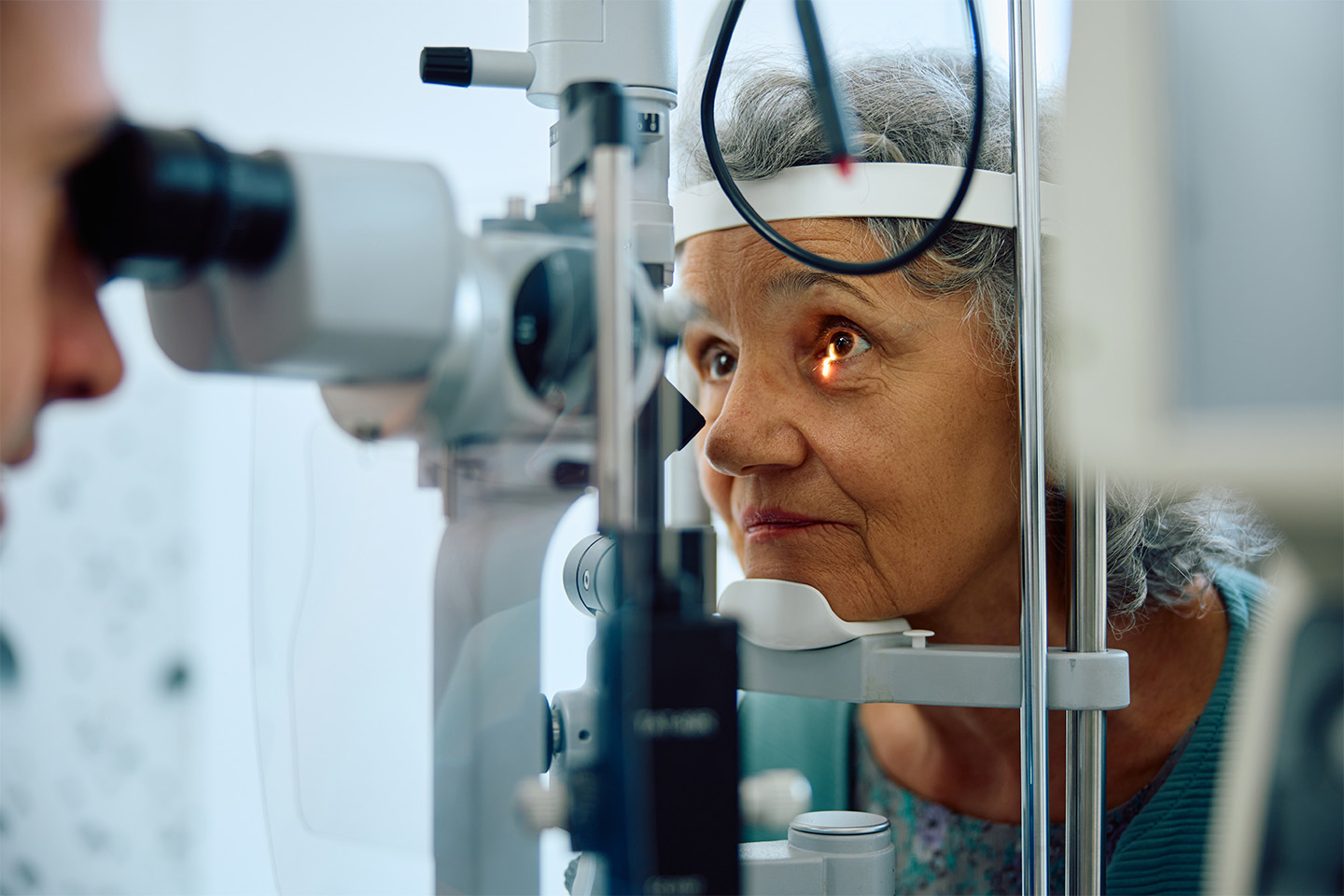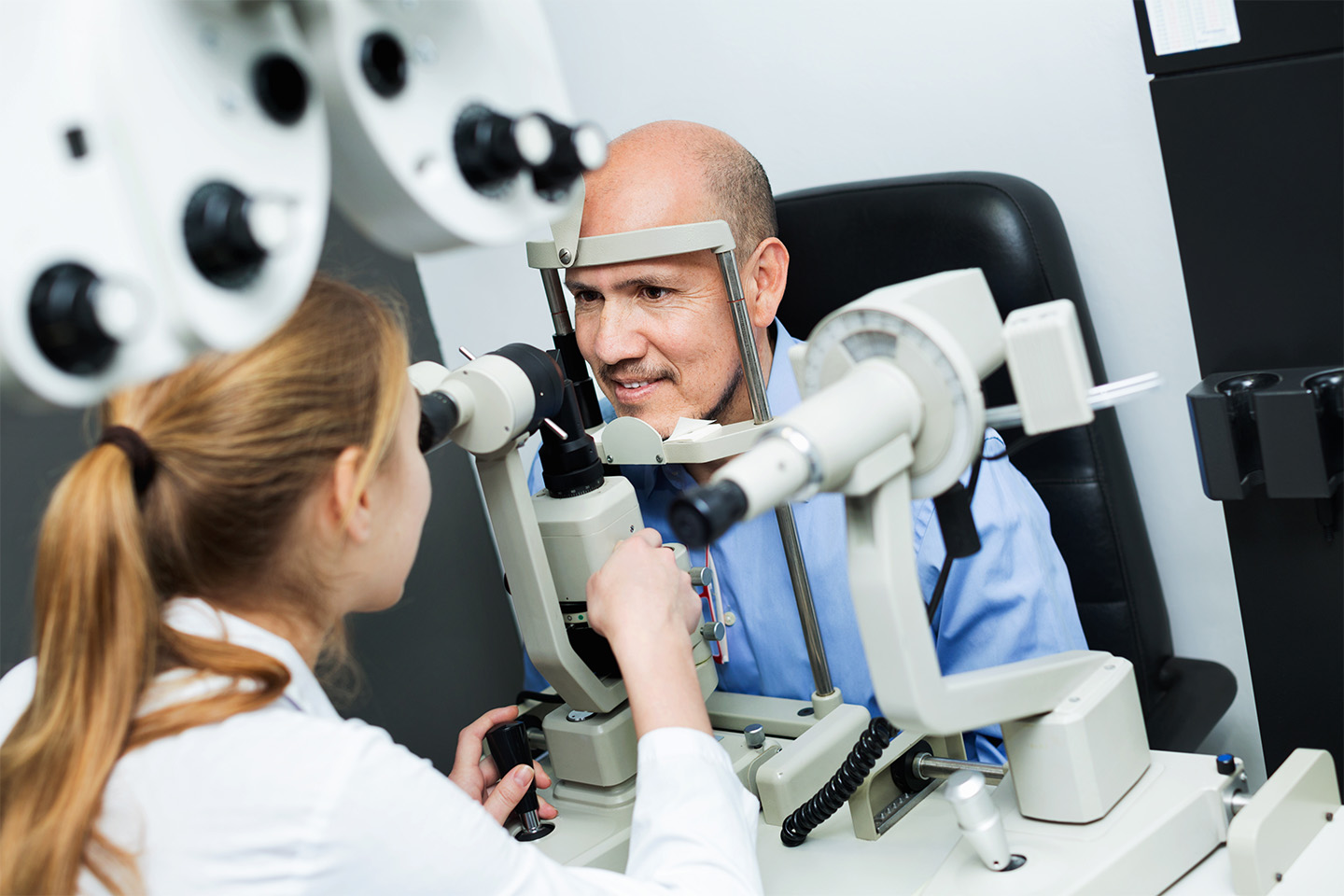What Does “20/20 Vision” Actually Mean?

Here’s what it actually means to have 20/20 vision, and why it’s just one part of assessing the quality of your eyesight.
If you wear glasses or contacts, you probably know that your optometrist is trying to correct your vision to “20/20.” Sure, having 20/20 vision means you can see well, but what do those numbers actually mean – and how are they calculated? Find out what it means to have 20/20 vision, and whether or not it really is “perfect.”
Calculating 20/20
Visual acuity, or how well you see objects while standing still, is made up of three factors: how the brain communicates with the eyes; how the retina and the brain’s vision center cooperate; and how the cornea and lens interact to focus light onto the retina. To measure acuity, doctors have their patients sit or stand in place and read a stationary poster, known as the Snellen eye chart.
20/20 is a ratio of distances calculated in feet. The first number stands for the distance between the patient and the Snellen eye chart (it’s always 20 feet). The second number can change, and it stands for the perceived distance. People with 20/20 vision will be able to see the letters on an eye chart clearly from 20 feet away. Someone with 20/40 vision will stand 20 feet away from an eye chart, and see the letters as if they were 40 feet away. In other words, the letters will appear blurry and difficult to read.
Importantly, this ratio is not a measurement of overall vision quality. Different eyes can measure differently; for example, it’s possible to have an eye that sees 20/20 and another that sees 20/40.
Better Than 20/20?
Though 20/20 is widely considered to be “good vision,” some people can actually see better than 20/20. Each line on a standard eye chart corresponds to a certain degree of visual acuity in descending order, with the topmost (and largest) letter “E” signifying 20/200. If that’s the only letter you can see clearly, you have really bad vision. When you look at something that’s 20 feet away, you’re seeing that object as clearly as most people see it from 200 feet away.
Toward the bottom, the Snellen eye chart has a few rows of tiny letters (rows 10 and 11) that someone with 20/20 won’t actually be able to see clearly. If you can, in fact, see those lines clearly, your vision is better than average—better than 20/20. You may have 20/15, 20/12, or even 20/10 vision if you’re able to see the smallest letters of all. Those with 20/10 vision can see clearly from 20 feet away what a person with “normal” 20/20 vision can only see clearly from 10 feet away.
Defining “Perfect Vision”
Though 20/20 vision is the most common term mentioned when discussing “good” vision, it only covers one component of eyesight: acuity. There’s also depth perception (the ability to see how far away objects are), eye coordination (how your eyes work together to give you a clear picture), the ability to focus on moving objects, color vision, and others.
Because acuity doesn’t represent a comprehensive assessment of the quality of one’s eyesight, it’s entirely possible to have 20/20 vision or better and still have poor eyesight. Someone with 20/40 or even 20/60 vision may have stronger depth perception and focusing ability than someone with 20/20. So, when it comes to defining “perfect vision,” everything has to be accounted for – not just visual acuity. Moreover, it will depend on what you need from your eyes. The definition of “perfect vision” will be different for a professional basketball player than it will be for a watchmaker, .
If you don’t have 20/20 vision and are looking for correction options, the eye care professionals at Swagel Wootton Eye Institute are here to help. Whether you’re interested in LASIK or other vision correction options, schedule a consultation with us online at our Mesa or Chandler locations or by phone for expert advice and the best treatment plan for you.









